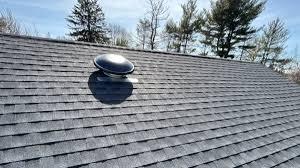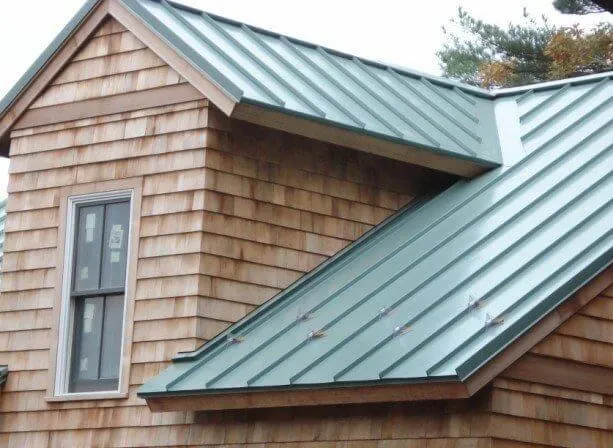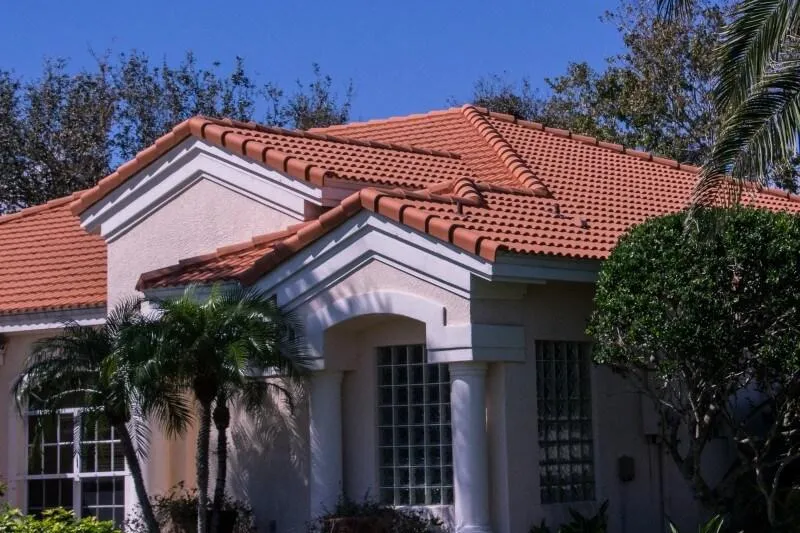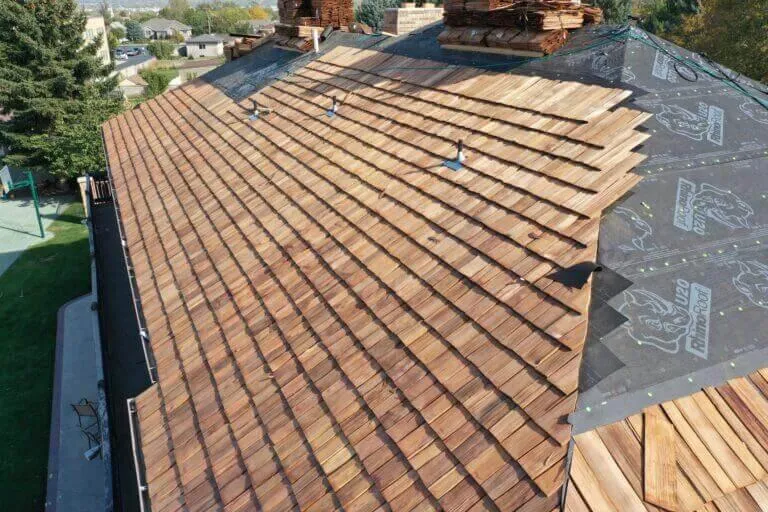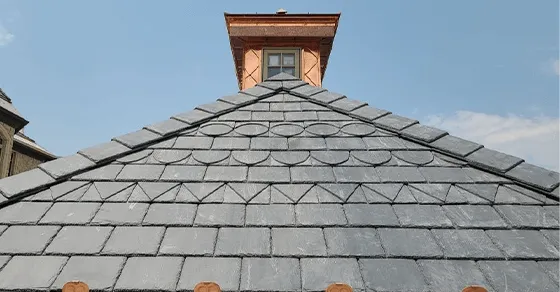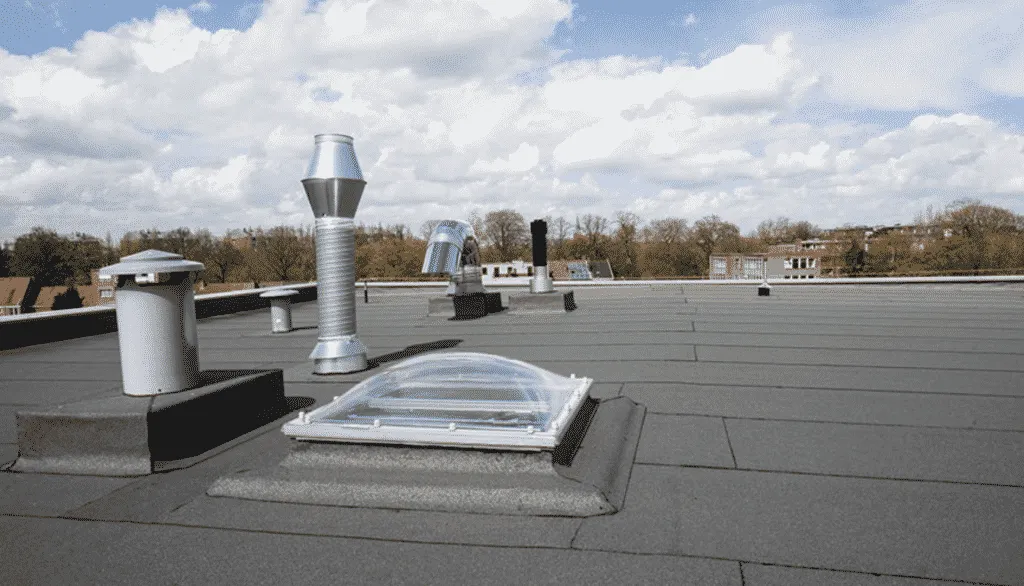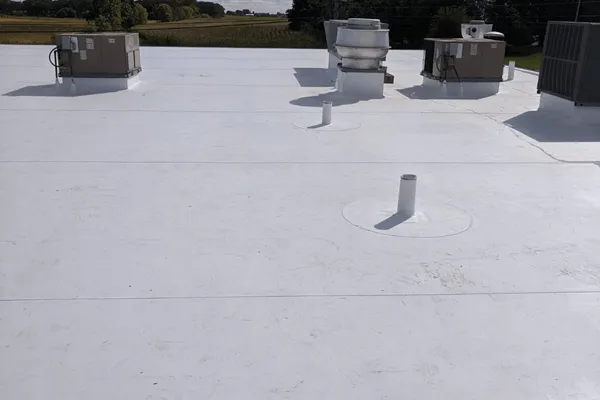TPO Roof Inspection Carmichael
TPO Roof Inspection Carmichael
If you're considering TPO roofing for your commercial property in Carmichael, it’s important to understand the benefits and maintenance involved. TPO, or Thermoplastic Polyolefin, is gaining popularity for its energy efficiency, cost-effectiveness, and eco-friendliness. However, like any roofing material, it requires regular inspections to ensure its longevity and performance. This article will guide you through everything you need to know about TPO roof inspection in Carmichael, from benefits to maintenance tips.
Key Takeaways
TPO roofing offers great energy efficiency, helping to lower utility costs.
Regular inspections can prevent costly repairs down the line.
Choosing a qualified contractor is essential for proper installation and maintenance.
Look for visible signs of damage to know when to inspect your roof.
Routine maintenance can extend the lifespan of your TPO roof.
Understanding TPO Roofing Benefits
TPO roofing is becoming super popular, and for good reason! It's not just another roofing material; it brings a bunch of advantages to the table, especially for businesses. Let's break down why so many people are choosing TPO for their roofing needs.
Energy Efficiency of TPO
Okay, so one of the biggest things about TPO is how well it helps with energy. Basically, it reflects sunlight like crazy. This means your building stays cooler in the summer, and you don't have to crank up the AC as much. I've seen some pretty cool data on this:
Roof Type | Average Summer Temp | Energy Savings (Approx.) |
|---|---|---|
Black Roof | 150°F | 0% |
TPO Roof | 90°F | 20-30% |
See? Big difference! That translates directly into lower energy bills, which is always a win.
Cost-Effectiveness for Businesses
Alright, let's talk money. Upfront, TPO might seem like any other roofing option, but the savings add up over time. Because it's energy-efficient, you're already saving on cooling costs. Plus, TPO is pretty durable, so you're not constantly shelling out cash for repairs. It's a smart, long-term investment for any business owner looking to save some money.
Environmental Impact of TPO
Now, let's get into the green stuff. TPO is actually pretty eco-friendly. It's recyclable, which is a huge plus. And because it helps reduce energy consumption, it also lowers your carbon footprint. It's a win-win for your wallet and the planet. Here are some reasons why TPO is considered environmentally conscious:
Reduces energy consumption
Is recyclable at the end of its lifespan
Contributes to LEED certification for buildings
Key Aspects of TPO Roof Inspection
Alright, let's talk about what to look for when checking out a TPO roof. It's not rocket science, but knowing the key things can save you a lot of trouble down the road. Regular inspections are super important, and understanding what to look for is half the battle.
Visual Inspection Techniques
First things first, you gotta look at the roof. I mean, really look. Grab a pair of binoculars if you need to, and don't be afraid to get up there (safely, of course!). You're looking for anything that seems out of place. Obvious stuff like tears or punctures are a big red flag, but also pay attention to the seams. Are they still sealed tight? Any signs of lifting or separation? How about the flashing around vents and chimneys? Is it in good shape, or is it cracked and crumbling? Color changes can also be a sign of problems. Discoloration might indicate areas where water is pooling or where the TPO membrane is degrading. Don't forget to check the drip edge fascia too.
Identifying Common Issues
Okay, so what are the usual suspects when it comes to TPO roof problems? Well, ponding water is a big one. If water sits on your roof for too long, it can weaken the membrane and lead to leaks. Another common issue is seam failure. Over time, the seams can start to separate, especially if they weren't properly installed in the first place. Punctures are also a concern, whether from falling debris, foot traffic, or even hail. And don't forget about shrinkage. TPO can shrink over time, which can put stress on the seams and flashing. Here's a quick rundown:
Ponding water
Seam separation
Punctures and tears
Shrinkage
Flashing issues
Importance of Regular Inspections
Listen, I can't stress this enough: regular inspections are key. Think of it like taking your car in for an oil change. You might not see anything wrong, but a professional can spot potential problems before they turn into major headaches. Ideally, you should inspect your TPO roof at least twice a year – once in the spring and once in the fall. This will give you a chance to catch any damage from the winter or summer months. Plus, regular inspections can help you extend the life of your roof and avoid costly repairs. It's a small investment that can pay off big time in the long run. Consider scheduling a [TPO roof](TPO Roof) inspection today!
Choosing the Right TPO Roofing Contractor

Okay, so you're thinking about getting some work done on your TPO roof, or maybe even getting a whole new one installed. That's great! But finding the right contractor can feel like a real headache. You want someone who knows their stuff, won't rip you off, and will actually show up when they say they will. Let's break down what to look for.
Experience and Expertise
First things first, you want a contractor who's been around the block a few times. Experience really matters when it comes to TPO roofing. It's not just about slapping some material on a roof; it's about understanding the nuances of the material, how it reacts to different weather conditions, and how to properly install it to avoid problems down the road. Look for a contractor with a solid track record of TPO installations and repairs. Don't be afraid to ask how many TPO roofs they've done and for how long they've been working with the material. A seasoned contractor will be able to answer your questions confidently and provide examples of their work.
Customer Reviews and Testimonials
Alright, let's talk about what other people are saying. Online reviews and testimonials can be a goldmine of information. Check out sites like Yelp, Google Reviews, and the Better Business Bureau to see what previous customers have to say about the contractor. Pay attention to both the good and the bad. A few negative reviews aren't necessarily a deal-breaker, but if you see a pattern of complaints about things like poor workmanship, missed deadlines, or unresponsive communication, that's a red flag. Also, don't just look at the star rating; read the actual reviews to get a sense of the specific issues people have experienced. A good contractor will have plenty of positive feedback and be responsive to any negative feedback, showing that they care about their reputation and customer satisfaction. You can also ask the contractor directly for references and reach out to those customers to get their firsthand experience.
Licensing and Insurance Requirements
This is where things get serious. Before you hire anyone to work on your roof, make sure they're properly licensed and insured. A license shows that the contractor has met certain requirements and is qualified to perform roofing work in your area. Insurance is even more important. It protects you in case something goes wrong during the project, like if a worker gets injured on your property or if the work damages your home. Ask the contractor for proof of insurance, including both liability and workers' compensation coverage. Don't just take their word for it; verify the information with the insurance company. Also, check with your local licensing board to make sure the contractor's license is valid and in good standing. Skipping this step could leave you liable for any accidents or damages that occur during the project. If you are in Carmichael, CA, make sure they have the correct roof repair certifications.
Hiring a roofing contractor is a big decision, so take your time and do your research. Don't be afraid to ask questions, check references, and get multiple quotes before making a choice. A little bit of due diligence upfront can save you a lot of headaches down the road.
Signs Your TPO Roof Needs Attention
It's easy to forget about your roof until there's a problem. But catching issues early can save you a lot of money and stress. Here's what to look for to know if your TPO roof needs some TLC.
Visible Damage and Wear
One of the first things you can do is just look at your roof. Obvious signs of damage include punctures, tears, or blisters on the TPO membrane. Seam separation is another big red flag. If you see any of these, it's time to call a professional. Also, keep an eye out for excessive dirt or debris buildup, as this can trap moisture and accelerate wear. Peeling, bubbling, and lifting indicate poor installation of TPO roofing.
Water Leaks and Stains
Water leaks are a pretty clear sign that something's wrong. Check your ceilings and walls for water stains, especially after it rains. Even small leaks can cause big problems over time, leading to mold growth and structural damage. Don't ignore those little drips! Sometimes, the source of the leak isn't directly above the stain, so a thorough inspection is key. Addressing leaks promptly can prevent extensive damage.
Energy Bills Increasing
Have you noticed your energy bills creeping up? Your roof could be to blame. A damaged or deteriorating TPO roof loses its ability to reflect sunlight and insulate your building effectively. This means your HVAC system has to work harder to maintain a comfortable temperature, resulting in higher energy consumption. If your bills are unusually high, it's worth getting your TPO roofing inspected.
Ignoring these signs can lead to bigger, more expensive problems down the road. Regular inspections and prompt repairs are key to keeping your TPO roof in good shape and protecting your property.
Here's a simple checklist to help you keep track:
Check for visible damage monthly.
Inspect for water stains after every rain.
Monitor your energy bills for unusual spikes.
Maintaining Your TPO Roof
Taking care of your TPO roof is super important to keep it in good shape and avoid big problems down the road. Regular maintenance can really extend its life and save you money in the long run. Think of it like taking care of your car – a little effort now prevents major breakdowns later.
Routine Maintenance Tips
Here are some simple things you can do to keep your TPO roof in tip-top condition:
Regular Cleaning: Get rid of any dirt, leaves, or debris that pile up on your roof. A soft broom or a low-pressure water spray works great. Don't use anything too harsh that could damage the membrane.
Inspect Seams: Check the seams where the TPO sheets join together. Make sure they're still sealed tight. If you see any gaps or cracks, it's time to call a pro for TPO repair.
Trim Overhanging Branches: Cut back any tree branches that could rub against the roof. This prevents scratches and potential punctures.
Check Drains and Gutters: Make sure water can drain properly. Clogged drains can lead to water buildup, which can cause leaks and other problems.
Seasonal Inspection Checklist
Different seasons bring different challenges. Here’s what to look for throughout the year:
Spring: Check for damage from winter storms. Look for any signs of leaks or water pooling.
Summer: Inspect for UV damage. TPO roofs are UV resistant, but prolonged exposure can still cause wear over time.
Fall: Clear away leaves and debris before winter sets in. Make sure gutters are clear to prevent ice dams.
Winter: Watch for ice buildup. Heavy snow and ice can put extra stress on your roof.
Professional Maintenance Services
While you can handle some maintenance tasks yourself, it's a good idea to get a professional inspection at least once a year. Professionals can spot potential problems that you might miss. They can also perform more thorough cleaning and repairs.
Getting a professional to take a look can save you from bigger headaches later on. They have the tools and knowledge to keep your roof in great shape. Plus, they can give you advice tailored to your specific roof and climate.
The TPO Roof Installation Process
Preparation and Planning
Okay, so you're getting a new TPO roof! That's awesome. First things first, it's not just slapping some material up there. Proper preparation is key. This involves a detailed assessment of your current roof. We're talking about checking the roof deck for any damage (rot, soft spots, etc.) and making sure it's clean and ready to go. Any old roofing needs to be removed, and the surface needs to be smooth. Also, planning out the layout of the TPO sheets to minimize seams is super important for a long-lasting, watertight roof. It's like prepping a canvas before painting – you want a solid base.
Installation Steps Explained
Alright, let's get into the nitty-gritty. The TPO membrane gets rolled out and attached to the roof deck. There are a few ways to do this: mechanically attached (screws and plates), adhered (glued down), or ballasted (weighted down with rocks or pavers). The choice depends on your roof structure and local codes. Seams are then heat-welded together to create a watertight seal. This is where the skill comes in – too much heat, and you can damage the membrane; not enough, and you won't get a good seal. Flashing around vents, chimneys, and other roof penetrations is also critical to prevent leaks. It's a bit like putting together a puzzle, but with heat guns and big rolls of plastic!
Post-Installation Inspection
So, the roof is on, and it looks great! But we're not done yet. A thorough inspection after installation is a must. This involves checking all the seams to make sure they're properly welded, inspecting the flashing around penetrations, and making sure there are no punctures or other damage to the membrane. It's like a final exam for the roof. Also, it's a good idea to get a professional inspection a year or so after installation to catch any potential problems early. Think of it as a check-up to keep your roof healthy for years to come.
Getting a TPO roof installed is a big deal, and it's worth doing it right. Don't skimp on the prep work, make sure the installation is done by experienced pros, and always get a post-installation inspection. It's an investment that will protect your building for a long time.
Common Myths About TPO Roofing
There are a lot of misconceptions floating around about TPO roofing. Let's clear up some of the most common ones so you can make informed decisions about your roof.
Durability Misconceptions
One of the biggest myths is that TPO isn't durable. People think it's a flimsy material that won't last. However, TPO is actually incredibly resilient. It stands up well to UV rays, chemical exposure, and extreme weather. While it might not be as inherently tough as some other materials like metal, it's certainly not as fragile as some people believe. With proper installation and maintenance, a TPO roof can easily last for 20 years or more. The key is to ensure you're working with a reputable installer who knows how to properly weld the seams and secure the membrane.
Cost Myths
Another common myth is that TPO is super expensive. While the initial cost might seem comparable to other roofing options, it's important to consider the long-term savings. TPO's energy efficiency can significantly reduce your cooling costs, especially during those hot Carmichael summers. Plus, its durability means fewer repairs and a longer lifespan, which translates to less money spent over time. So, while the upfront investment might be similar, the overall lifecycle cost of TPO is often lower. Think of it as an investment that pays off in the long run. For commercial properties, the cost-effective TPO can be a game changer.
Maintenance Misunderstandings
Finally, some people believe that TPO roofs require zero maintenance. That's simply not true. While TPO is relatively low-maintenance, it still needs regular inspections and cleaning to ensure it performs optimally. Here's a quick rundown of what you should do:
Regular Inspections: Check for any signs of damage, such as punctures, tears, or seam separation.
Cleaning: Remove any debris, such as leaves, branches, or dirt, that can accumulate on the roof.
Professional Checkups: Schedule professional inspections at least once a year to catch any potential problems early.
Ignoring maintenance can lead to bigger issues down the road, so don't fall into the trap of thinking you can completely neglect your TPO roof. A little bit of care can go a long way in extending its lifespan and preventing costly repairs.
Wrapping Up Your TPO Roof Inspection
So, there you have it! Getting a TPO roof inspection in Carmichael is pretty straightforward, and it can save you a lot of headaches down the road. Regular checks help catch small issues before they turn into big problems, which is a win for your wallet and your peace of mind. If you’re thinking about getting your roof inspected, don’t hesitate to reach out. We’re here to help you keep your roof in great shape, ensuring it lasts for years to come. Remember, a little maintenance goes a long way!
Frequently Asked Questions
What is TPO roofing?
TPO stands for Thermoplastic Polyolefin. It's a type of roofing material that is popular for commercial buildings because it is strong and energy-efficient.
What are the benefits of TPO roofs?
TPO roofs are great because they help save energy, are cost-effective, and are better for the environment compared to other roofing materials.
How often should I inspect my TPO roof?
It's important to check your TPO roof at least twice a year and after big storms to catch any problems early.
What should I look for during an inspection?
When inspecting a TPO roof, look for visible damage like cracks, tears, or blisters, as well as signs of water leaks.
How do I choose a good TPO roofing contractor?
Look for a contractor with experience, positive customer reviews, and proper licenses and insurance.
Can I repair my TPO roof myself?
While some minor repairs can be done by homeowners, it's usually best to hire a professional to ensure the work is done correctly.

Contact Us To Get A Free Quote!
Roofing We Install In Carmichael


